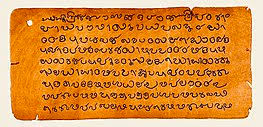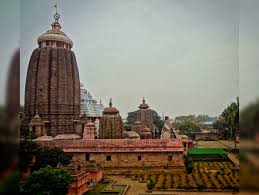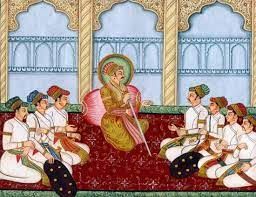- Books Name
- Social Science Book
- Publication
- Cognizance Publication
- Course
- CBSE Class 7
- Subject
- Social Science
Chapter 8
The Making of Regional Cultures
India is a vast country. Its rich traditions, cultures, languages, food, clothes, poetry, dances, music and paintings also tend to associate with each region.These traditions and cultures are intermix. The some traditions appear specific to some reasons. Other seems to be similar across regions and sometimes older practices take a new form in other regions.
Southern Region
The Cheras and the development of Malayalam
Inscription composed in Malayalam

The Chera Kingdom of Mahodayapuram was established in the ninth century in the south-western part of the penninsula, part of present day Kerala. It was likely that Malayalam was spoken in this area.The rulers introduced the Malayalam language and scripts in their inscriptions.This is one of the earliest example of the use of regional language in official records in the subcontinent. At the same time, the Cheras also drew upon Sanskritic traditions.Pictures of Kerala, which is traced to this period, borrowed stories from the Sanskrit epics.The first literary works in Malayalam, dated to about the twelfth century are directly indebted to Sanskrit. A fourteenth century text, the Lilatilakam dealing with grammar and poetics, was composed in Manipravalam, literally “diamonds and corals”refering to the two languages, Sanskrit and the regional language.
Rulers and religious traditions
The Jagannath cult

The best example of this process is the cult of Jagannath. Literally, Lord of the world, the name for Vishnu at Puri, Orissa. To date the local tribal people make the wooden images of deity, which suggests that the deity was originally a local God, who was later identified with Vishnu.In the twelfth century, one of the most important rulers of the Ganga dynasty, Anantavarman decided to erect a temple forPurushotthama Jagannath at Puri.In 1230, kingAnangabhima III dedicated his Kingdom to the deity and proclaimed himself as the deputy of the God. As the temple gained importance as acentre of pilgrimag its authority in social and political matters also increased.Those who conquered Orissa, such as the Mughals, the Marathas and the English East India Company, attempted to gain control over the temple.They felt that this would make their rule acceptable to the local people.
Traditions of heroism
Rajputs

In the 19 century, the region that constitute most of present day Rajasthan was called Rajputana by the British. There were several groups who identify themselves as Rajput in many areas of northern and central India.
Rajputs are often recognised as contributing to the distinctive culture of Rajasthan. From about the eighth century, most of the present day state of Rajasthan was ruled by various Rajput families.Prithviraj was one such ruler.Rajput rulers cherished the ideal of hero who fought valiantly, often choosing death on the battlefield rather than face defeat.Stories about Rajput heroes were recorded in poems and songs which were recited by specially trained minstrels.Ordinary people were also attracted by these stories, which often depicted dramatic situations, and a range of strong emotions, loyalty, friendship, love, will or anger, etc.Women are also depicted as following their heroic husband in both life and death. There are stories about the practice of Sati or theimmolation of widows on the funeral pyre of their husbands.So those who followed the heroic ideal often had to pay for it with their lives.

 Cognizance Publication
Cognizance Publication
